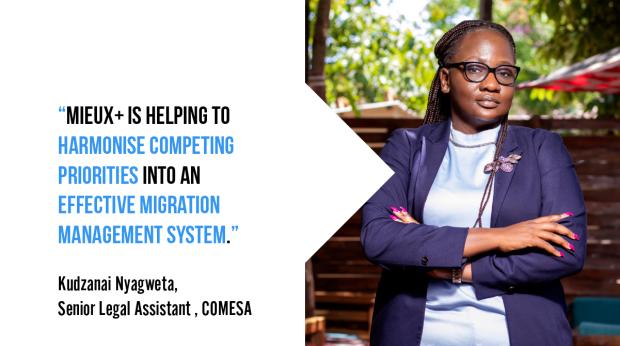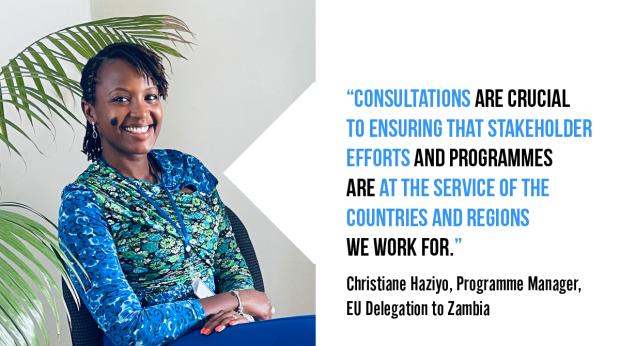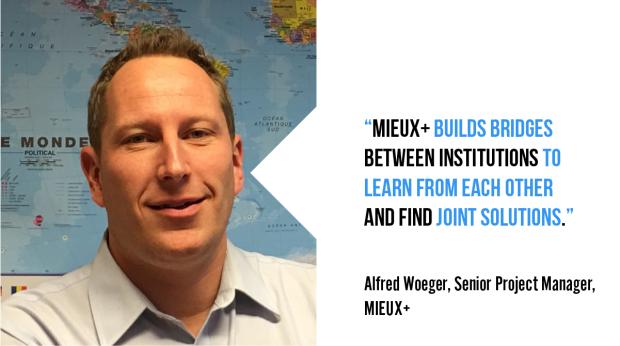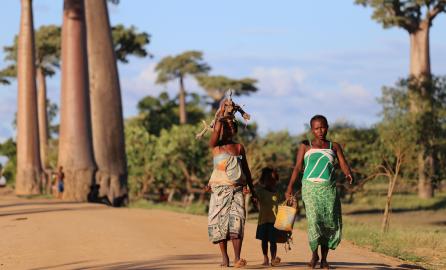This article is also available in French.
Migration and development go hand in hand. Since the beginning of time, humans have tried to overcome adversity and improve their economic and social conditions by moving to other places. Modern communication and transportation have increased the opportunities to move, but COVID-19 has challenged migrants immensely. Below are some best practices from Eastern and Southern African on this matter.
The UN 2020 theme on International Migrants Day: Reimagining Human Mobility showcased COVID-19 as an instigator and a risk for migrants, and called for a collective responsibility to create a safer and more resilient world. One year on, new border closures and the ongoing unpredictability of the pandemic highlight the need to strengthen ties between partners harnessing the potential of human mobility, which is the UN theme of the 2021 international migrants’ day.
In this context, the Eastern and Southern African region is improving its migration governance and management with support from an EU facility called MIgration EU eXpertise (MIEUX)1.
MIEUX+2 is the knowledge exchange initiative between the European Union and institutions in Africa, Asia, Eastern and Southern European Neighbourhoods, Latin America, and the Caribbean region. The International Centre for Migration Policy Development (ICMPD) has implemented it since 2009.
In 2010, the Common Market for Eastern and Southern Africa (COMESA) first contacted this joint EU-ICMPD facility. Since then, this collaboration has completed two projects, with a third in progress, in which the African regional economic organisation has improved its capacity to manage migration. Alfred Woeger, Senior Project Manager of the MIEUX+ Facility; Kudzanai Nyagweta, Senior Legal Assistant at COMESA and Christiane Haziyo, Programme Manager at the EU Delegation to Zambia, share their insights of this – ten-year plus – collaboration and their ongoing activities during their third project.
1. Empowering equal and coordinated partnerships in the region
Since its foundation in 1994, COMESA has been ensuring economic prosperity through the regional integration of its members3. “COMESA Secretariat doesn’t have a migration unit. We address migration as a transversal issue and trade facilitation tool – within the scope of the COMESA Treaty aims and objectives – to ensure trade between Member States,” says Kudzanai Nyagweta. However, she continues, “in the context of the global pandemic, we decided to continue working with MIEUX+ to help us contextualise on the topic, and to facilitate economic growth in the region without spreading the virus.”
Christiane Haziyo agrees, “MIEUX+ has also been instrumental in including the gender component to migration. This was complementing the gender-disaggregated statistical data and analysis on small-scale cross-border trade. Women are among the most vulnerable, and the MIEUX+ initiative helps us to find solutions suitable to their needs.”

The need to coordinate migration goes beyond the internal structure of COMESA and the capacity of its member states. “The pandemic has deeply affected migration patterns and – more than ever – we need to support and connect institutions working on this topic,” explains Alfred Woeger.
In the current context marked by business closures, disruption of agricultural production, and loss of employment and revenue – as a result of the limitations on mobility imposed by the COMESA Member States during the pandemic –, MIEUX+ establishes peer-to-peer partnerships. In these partnerships, European and regional experts learn from their respective experiences and promising practices constructively, so they can review the methods and systems in place, boosting collaboration and trust.
In the specific case of COMESA, the joint EU-ICMPD facility has been instrumental in implementing their guidelines on mobility and trade and reducing the impact for small-scale cross-border traders in the region – mostly youth and women. Christiane Haziyo highlights the importance of these guidelines, “these are instruments available for those at the forefront implementing the programme. So, we are not only talking about high-level solutions, but practical ones for those in the field.”
2. Exchanging of information for common ground
The long and effective partnership between COMESA Secretariat and MIEUX+ resulted in improved dialogue and reinforced collaboration for everyone involved. Kudzanai Nyagweta highlights the migration platform created as “a sustainable space to hear the concerns of the parties involved. Through these discussions, we share ideas and recommendations for future projects while saving time and avoiding duplication”. For this dialogue, the support of the focal points appointed by the joint EU-ICMPD facility was instrumental, “their contribution helped to speed up conversations with the relevant ministers involved,” continues Kudzanai Nyagweta.
Consultation is vital for Christiane Haziyo, “at national and regional level, multiple donors and programmes are dealing with migration. Therefore, the MIEUX+ facility consulted the EU Delegation at the inception phase to facilitate dialogue among implementing partners, UN agencies and the MIEUX+ team to make these programmes complementary.”

The Regional webinar on the implications of the COVID-19 pandemic on border management is an excellent example of these knowledge-sharing exercises. Public officials working in Customs, Immigration, Port Health, Drug Law Enforcement, and Police from the COMESA Member States, international organisations and regional federations discussed the consequences of COVID-19 on border management. In addition, they learnt from the experience of several EU Member States.
Following these dialogues, COMESA Secretariat has started to implement the recommendations. A targeted training course will increase the capacities of border officials to manage migration and mobility in the case of future health crises.
3. Supporting partners’ needs through implementing a flexible approach
Regional organisations, national ministries, local authorities, parliamentary bodies, judicial actors, and civil society organisations can request MIEUX+ support4 according to their needs and priorities.
“The sensitive but relevant experience of the EU dealing with migration management is requested by partners like Benin, Costa Rica, Ukraine or the COMESA Secretariat, to name a few,” says Alfred Woeger.

Christiane Haziyo adds, “the global pandemic has opened the eyes of many about migration. This health emergency has shown that human mobility, trade and health are not independent, and it is impossible to tackle one problem without addressing the others.”
Kudzanai Nyagweta recognises the involvement of MIEUX+, “the holistic conceptualisation of the project with research, assessment of needs and consultations – conducted by the MIEUX+ team – ensured a proper translation of the programme’s aims in the implementation phase.”
Contextualisation of the solutions needed is crucial, according to Alfred Woeger, “MIEUX+ can adapt to institutional or political changes which may occur during its engagement with a partner country, or new needs that might emerge in order to respond to the pandemic. “
Challenges ahead and ongoing action
In this region, where most of the boundaries are man-made, and communities are spread across borders, there is still a lot to improve on in cross border management. First, information gathered is often not digitalised; second, staff at border posts don’t have the knowledge or capacity to reinforce control. MIEUX+ is supporting COMESA to organise a pilot training course at four border posts limiting Zambia with Malawi, Tanzania, DRC and Zimbabwe to extract lessons learnt and roll out this training to other COMESA member states.
Click on the play button below to watch our video about the MIEUX+ facility.
Have you been involved in relevant interventions for the improvement of migration governance and management?
What was your approach?
Did you meet any challenges, and how did you address them?
Leave your comment below!
|
More about MIEUX+ More than 100 countries worldwide have benefited from the capacity development activities delivered by over 380 migration experts, nationals from the EU27 Member States and the United Kingdom. Moreover, 13% of migration experts deployed between 2016 and 2020 were citizens of countries outside the EU. Further reading:
|
Credit: Video © Capacity4dev | Photo © Unsplash
1 Areas covered by the MIEUX+ facility include horizontal interventions (cross-cutting topics related to migration governance), irregular migration and trafficking in human beings, international protection and asylum policy, legal migration and mobility or migration and development.
2 MIEUX, or MIEUX+ since 2020, is a joint initiative funded by the European Union (EU) and implemented by the International Centre for Migration Policy Development (ICMPD). The Project Steering Committee provides overall coordination and is tasked with reviewing and approving the requests for assistance. The Committee is composed of the European Commission’s Directorate-General for International Partnerships (DG INTPA), the Directorate-General for Migration and Home Affairs (DG HOME), the Directorate-General for Neighbourhood and Enlargement Negotiations (DG NEAR), the European External Action Service (EEAS), and the ICMPD MIEUX+ team.
3 COMESA Member States are Burundi, Comoros, Democratic Republic of Congo, Djibouti, Egypt, Eswatini, Eritrea, Ethiopia, Kenya, Libya, Madagascar, Malawi, Mauritius, Rwanda, Seychelles, Somalia, Sudan, Tunisia, Uganda, Zambia and Zimbabwe.
4 Examples of these activities include conferences and workshops, knowledge exchange sessions, study visits, training and policy development.





Comments
Log in with your EU Login account to post or comment on the platform.